For all his importance, Antoine-Jean Gros (1771–1835) remains an underappreciated painter. He not only gave lustre and legitimacy to the Napoleonic adventure through grandes machines such as Bonaparte Visiting the Plague-Stricken in Jaffa (1804), and Napoleon on the Battlefield of Eylau (1808), but was the key figure as French art transitioned from neoclassicism to Romanticism. Gros may have been a devoted student of Jacques-Louis David but he became a heroic figure to the likes of Théodore Géricault and Eugène Delacroix. Nevertheless, although he is a regular presence in discussions of Empire and Restoration art his exhibition history is negligible and there is no modern biography of him. His neglect might be because he falls into neither neoclassicist nor Romantic camps, or perhaps because the Napoleonic pictures for which he is best known are wrongly seen as merely accomplished propaganda exercises. Whatever the reason, the Louvre’s exhibition of its holdings of his drawings is both welcome and frustrating: welcome because it gives him a long-overdue moment in the sun and frustrating because it displays enough of his talent and character to suggest that he deserves much more.
In June 1835 Gros committed suicide. At the studio sale that followed, 24 albums of sketches were recorded: the Louvre owns four of them, the only ones known to have survived. These notebooks, containing 438 sketches, all relate to the first part of his career and in particular his stay in Italy from 1793 to 1800, which followed his training in David’s studio. Gros had entered the Prix de Rome competition in 1792 but came second and travelled to Italy in part for self-education and in part to escape the darkening Revolution. Tripier Le Franc in his 1880 biography of the artist suggested it was Gros’s fellow student Gérard who warned him he had become a person of interest to Revolutionary factions and to leave the country.
The great bulk of the sketchbook drawings are entirely conventional – quick compositional copies after the antique and Renaissance paintings. There are though hints as to his future career and the opposing forces that would later cause him so much grief. One sketchbook is full of intimate drawings of the Meuricoffre family that took him under its wing when he lived in Genoa. It was through their connections that he was introduced in 1796 to Joséphine Bonaparte who was en route to Milan to meet her husband. She invited Gros to accompany her in her carriage, and introduced him to the general, fresh from victory at Arcola. The result was his celebrated portrait of the dashing Bonaparte storming the bridge during the battle. The portrait, all swagger and glamour, was exhibited at the Salon of 1801 and became both the foundational image of Napoleon’s career and the work that announced Gros’s arrival as an artist.
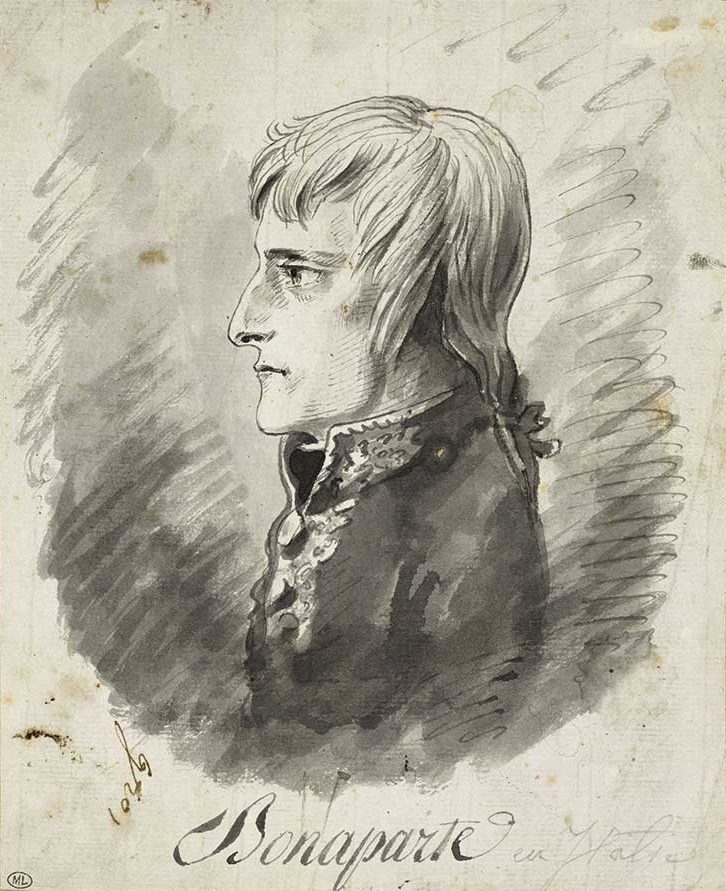
Portrait of Bonaparte, Commander-in-Chief of the Army of Italy (1796), Antoine-Jean Gros. Photo: © RMN-Grand Palais (musée du Louvre)/Michel Urtado
The exhibition includes a pen-and-ink profile drawing of the same time that was probably intended as the design for a medal. Gros complained that Bonaparte, full of restless energy, gave him hardly any sittings (‘Je ne puis avoir le temps de choisir mes couleurs’) and he succeeded only because Joséphine pulled her restive husband on to her lap and calmed him. Bonaparte’s pleasure with the portrait resulted in him appointing Gros to the Commission des Arts responsible for purloining works of art and transporting them to France. Some of the most vivid of Gros’s Italian sketches show one such convoy – wagons, straining men, bustling riders – as he accompanied it from Rome to Livorno.
Alongside approved classical and Renaissance works by the likes of Masaccio and Ghiberti the Italian sketchbooks also contain drawings after Rubens, an artist who stood counter to the strict neoclassical training of David’s studio. It would be the Rubensian traits of colour, movement, visual luxury and the allure of contemporary history that endeared Gros to the first generation of Romantics, but his instinctive attraction to this proscribed manner was a source of turmoil for him and a factor in his eventual suicide.
One of the most beautiful drawings in the exhibition is an early, Italian-era attempt to reconcile instinct and painterly decorum, a rapid brush drawing in brown ink made for a proposed painting of the young Alexander taming the frightened horse Bucephalus. The rearing animal and leaping boy are bound together in what amounts to a vigorous dance: the subject may be taken from Plutarch but Gros’s interest is wholly in the fluidity of movement and the knot made by the two entwined figures.
The paintings in which he charted Napoleon’s ascent allowed Gros to accommodate, temporarily, his conflicting beliefs. For example, a drawing for an early version of Bonaparte Visiting the Plague-Stricken in Jaffa – the painting that would be the sensation of the 1804 Salon – shows Napoleon during the Egyptian campaign cradling a plague-stricken French soldier in his arms. The pose is taken from the Menelaus sculpture in the Loggia dei Lanzi in Florence. For the finished painting Gros would abandon this classical reference to show the general touching a bubo in the soldier’s armpit – a potent gesture of almost reckless courage, designed to quash the truth, which was that Bonaparte had ordered many of his suffering soldiers to be given a fatal dose of laudanum so as not to slow down his troop movements.
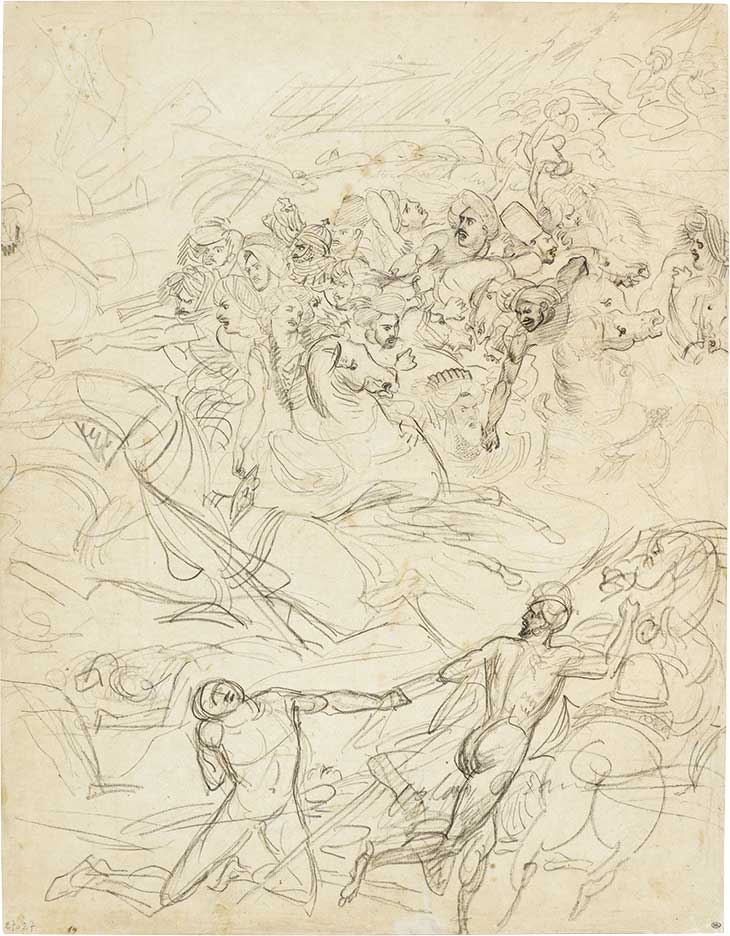
Group of Fleeing Turks (c. 1801), Antoine-Jean Gros. Photo: © RMN-Grand Palais (musée du Louvre)/Michel Urtado
If this drawing and another bravura sheet showing a group of Turkish soldiers fleeing during the Battle of Nazareth are evidence that Gros found his métier through the figure of Napoleon, there is also a poignant reminder that he couldn’t successfully reproduce the formula at will. It was the returning Bourbon monarchy that made Gros a baron and they sought to harness his propagandising skills to give them the glamour they so badly lacked. One example was the commission to depict Louis XVIII fleeing the Tuileries palace at night during the Hundred Days. In his compositional drawing and the subsequent painting of 1817 Gros was unable to salvage the portly and unheroic king: surrounding his unprepossessing figure with clamorous soldiers and weeping women could not detract from the fact that what he was asked to depict was a moment of royal cowardice (Géricault, who was part of the king’s escort, was abandoned in the rain when Louis fled for the Netherlands).
Unfortunately the Louvre does not have an example from the final phase of Gros’s career, when he returned to classical subjects in an ill-fated attempt to assuage his master David, who was in exile in Brussels. It would have rounded out this choice exhibition and demonstrated the circularity of a career that shone most brightly when Gros forgot to fight himself.
‘Antoine-Jean Gros (1771–1835): Drawings from the Louvre’ is at the Musée du Louvre, Paris, until 30 September.
From the September 2019 issue of Apollo. Preview and subscribe here.
Unlimited access from just $16 every 3 months
Subscribe to get unlimited and exclusive access to the top art stories, interviews and exhibition reviews.

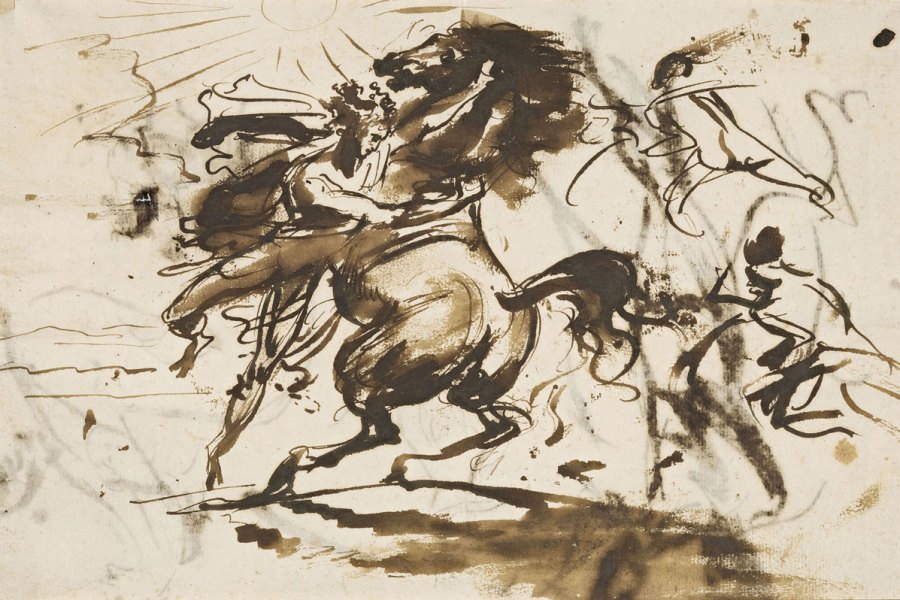
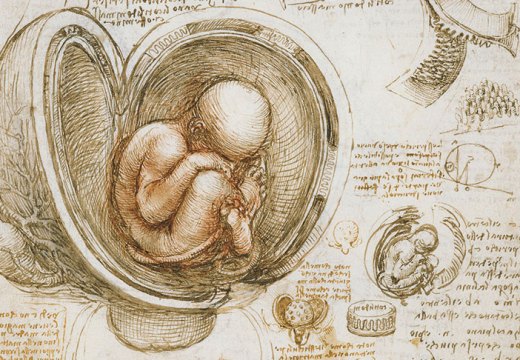
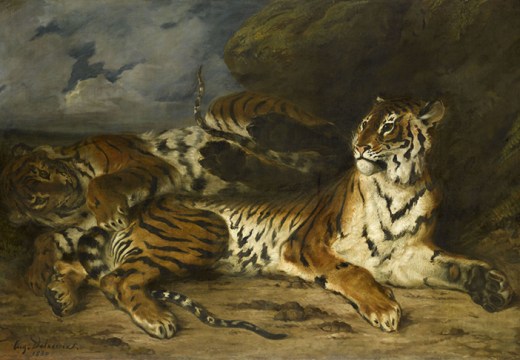
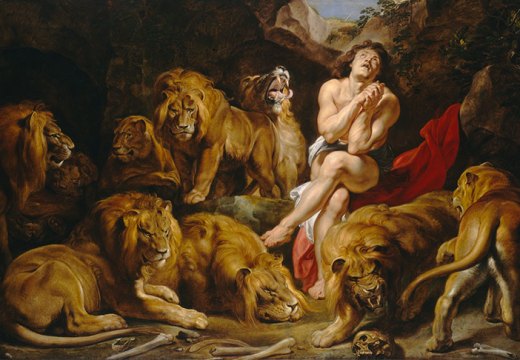









![Masterpiece [Re]discovery 2022. Photo: Ben Fisher Photography, courtesy of Masterpiece London](http://www.apollo-magazine.com/wp-content/uploads/2022/07/MPL2022_4263.jpg)
It’s time for the government of London to return to its rightful home